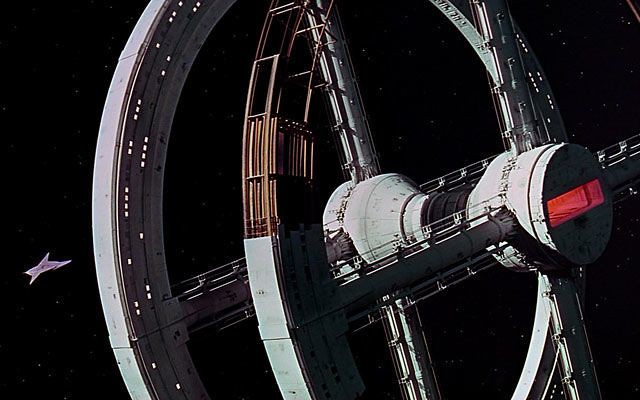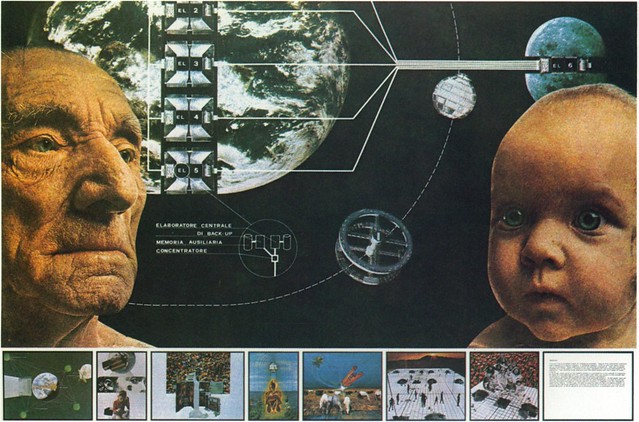Joan Nunez
Professor Ellis
ENG2420 E573
26 May 2020
Is A Clockwork Orange Science Fiction?
Science Fiction is a genre that focuses on imaginative science applied to a society or individual. It is one of the most popular genres to do this day. It is seen in novels, films, comics, tv series, and other forms of entertainment. The genre is so vast that it can be difficult to point to one exact definition. Science Fiction is more than just aliens, outer space, robots, and teleportation. Throughout the semester I used to think that’s all there was to Science Fiction but I was proven wrong because there are many sub-genres to Science Fiction. The sub-genre that interests me was cyberpunk. According to Paul Youngquist, article “Cyberpunk, War, and Money: Neal Stephenson’s Cryptonomicon” it said, “It has been over twenty-five years since Gibson hacked his way onto the science fiction continuum, creating a subgenre that became instantly infamous: cyberpunk. It was dystopian. It was hip. It was Goth angst meets digital wizardry”(Youngquist 319). The novel, “A Clockwork Orange”(1962) strongly displays the themes of cyberpunk.
There were many great Science Fiction definitions by famous writers of the genre, the one that stood out was Ray Bradbury’s latest definition, “Science Fiction is the fiction of ideas. Ideas excite me, and as soon as I get excited, the adrenaline gets going and the next thing I know I’m borrowing energy from the ideas themselves. Science Fiction is any idea that occurs in the head and doesn’t exist yet, but soon will, and will change everything for everybody, and nothing will ever be the same again. As soon as you have an idea that changes some small part of the world you are writing science fiction. It is always the art of the possible, not the impossible(Bradbury par. 8). This definition closely related to A Clockwork Orange because the idea of a near-future dystopian society in the future that contains extreme acts of violence by the youth and the government combatting this by performing scientific experiments on the youth to turn them “good” is not as far-fetched as some might think.
“A Clockwork Orange”(1962) by Anthony Burgess is about the protagonist, Alex, and his ruthless teen gang or as they referred to themselves as “droogs” go in society committing violent crime after crime. One horrendous crime they attempted was to rob an innocent elderly lady. Alex barged into the lady’s home and gets into a scuffle with her leading him to murder her. Alex pays the price as he is caught and sentenced to prison for a long time. As time passes, Alex settles into his new reality in prison but then gets into an incident beating up a prisoner and he is then picked to go through an experimental treatment called, “Ludovico’s Technique”. It is a form of therapy that injects Alex with a substance that makes him sick, then is forced to watch a series of violent films including Nazi savagery. As time passes, the therapy settles in as Alex associates violence with nausea and headaches from the shot. After a couple of more years in prison, the experiment is deemed successful and Alex is no longer a threat since he can’t attempt vicious acts without feeling ill. Alex bumps into his past gang members, Dim and Billyboy who are now police officers, they notice how defenseless Alex has become and they get revenge on him by driving him to a field and brutality hurting him. The helpless Alex tries to look for help and discovers a home and begs for help. To his surprise the man that opens the door is the same person that Alex and his crew had viciously attacked and raped his wife in the past. Luckily for Alex, the man does not recognize him because at the time the inhumane act was committed, everyone had a mask. The man is F. Alexander, a political protester and he decides he can use Alex’s recent treatment experience as a way to stop the government. Alex does not agree with the idea and argues to F. Alexander in his teenage slang called “Nasdet”. F. Alexander recognizes the strange language and realizes that it was the same language used the day he and his wife were viciously attacked. F. Alexander retaliates by locking Alex in an apartment and blasting classical music that causes Alex excruciating pain. He hopes this will lead Alex to commit suicide so the government is to blame for the death. The plan does work at first because Alex does jump from the window but he does not die and ends up at the hospital. The treatment is undone by the doctors, resulting in Alex going back to his normal violent self. Now Alex is back committing the same violent acts with a new gang but there is a sudden change of heart as Alex has had enough of the violence and decides he wants a normal life with a future son in mind.
A Clockwork Orange is part of the cyberpunk genre because it contains punk sensibility. Throughout the semester, I have learned about each sub-genre of Science Fiction and so happened to learn about the characteristics of cyberpunk. One of the characteristics of cyberpunk is punk sensibility. According to the article “Common Punk Rock Ideologies and Philosophies” it said,” In its original incarnation, the punk subculture was primarily concerned with concepts such as rebellion, anti-authoritarianism, individualism, free thought, and discontent. Punk ideologies are usually expressed through punk rock music, punk literature, spoken word recordings, punk fashion, or punk visual art. Some punks have participated in direct action, such as protests, boycotts, squatting, vandalism, or property destruction”(P.I.S. Blogging 1). In the novel countless ultra violent acts are being committed by the punk community. The youth culture has no remorse for innocent citizens as they take it upon themselves to assault, rape, rob, etc anyone because they can do so. In “A Clockwork Orange” by Anthony Burgess, the protagonist Alex said, “Soon it was trees and dark, my brothers, with real country dark. […] We filled around for a while with other travelers of the night, playing “Hogs of the Road.” Then we headed west, what we were after now was the old surprise visit, that was a real kick and good for laughs and lashing of the ultra-violent”(Burgess 15). Alex and his gang were riding around in a stolen vehicle and driving recklessly, putting civilians’ life at risk because it was their form of entertainment.
According to Charles Sumner from the University of Southern Mississippi, her article “Humanist Drama in A Clockwork Orange” said, “ Yet the assertion that he commits crimes because he likes to only begs the question of why he likes to do it. Alex believes that he courageously defends his individuality, never realizing that his criminal desires, along with his more mundane likes and dislikes, his aesthetic tastes, even, are all socially or institutionally conditioned. Put differently, Alex does not act so much as he reacts, and it is this dialectical movement between action and reaction, freedom and servitude”(Sumner 50). This shows that ultra violence is the youth’s way of expressing themselves in the midst of the dystopian society. It has become a norm for the youth to beat up the homeless, rape girls, and rob innocent old ladies because it brings them happiness. They have the freedom to do as they please and they prefer to do bad instead of good. Now that the “punk” part of the genre has been addressed, let’s discuss the “cyber” aspect.
Some people are saying that A Clockwork Orange is not cyberpunk because there is not enough “cyber” element to it. That is complete blasphemy and to those critics I want to introduce them to the Ludovico technique. In the novel it said, “It’s not been used yet,” he said, “not in this prison, 6655321. Himself has grave doubts about it. I must confess I share those doubts. The question is whether such a technique can really make a man good. Goodness comes from within, 6655321. Goodness is something chosen. When a man cannot choose he ceases to be a man.”(Burgess 48). An unconventional type of therapy that requires the patient to be injected with drugs all while being in a skull cap wired to machines and forced to watch awful films is the government’s solution to all the madness occurring. The technique takes full effect because in every situation Alex tries to act violently he is met with overwhelming sickness. This is an example of “cyber” because it is advanced technology immersed in a dystopian society to combat violence.
There is a dilemma involving the Ludovico Technique because criminals are forced to be treated against their free will. This can connect to the dystopian society element of cyberpunk. In the society of A Clockwork Orange the government decides what your fate is, it is not under your control. That signifies that Alex’s society is imposing harmful and oppressive acts towards its member. According to Minodora Otilia Simion, Ph.D. Lecturer at the University of Târgu-Jiu in their article, “Freedom of Choice and Moral Consequences in Anthony Burgess’ A Clockwork Orange” it said, “In spite of his experience as a victim of human violence F.Alexander has remained committed to the belief that man is “a creature of growth and capable of sweetness.” That is why he rejects the techniques of conditioning used in criminal reform believing that man is capable of sweetness and should not be turned into a piece of clockwork. On Alex‟s visit F. Alexander does not recognize him(as he and his droogs were wearing masks when they committed the rape.). He sees in Alex only another “victim of the modern age” and he is very compassionate”(Simion 67). Even F. Alexander, a victim to ultra violence agrees it is morally wrong to reform a human against their say. The totalitarianist rule over an oppressed society shows why the novel is part of the cyberpunk genre.
Science Fiction is more than aliens, time travel, and space. There are various sub-genres to Science Fiction because it is too enormous of a genre to describe in a couple of words. One key sub-genre is cyberpunk, Anthony Burgess’ A Clockwork Orange shows the characteristics of cyberpunk from dystopian society, advanced technological use, punk sensibility, and more. The novel goes in depth into what society would be if overrun by the barbaric youth and the government’s idea of retaliation is by forcing incriminated juveniles through aversion therapy. If you ask me the novel doesn’t sound impossible for the near future. A Clockwork Orange is a form of cyberpunk literature.
Work Cited
Bradbury, Ray, “Ray Bradbury, The Art of Fiction No. 203. “By Sam Weller. The Paris Review 192 (Spring 2010). Web. 10 May 2014.
Burgess, Anthony. “A Clockwork Orange (Uk Version) .” Antilogicalism, antilogicalism.com/wp-content/uploads/2018/04/clockwork-orange.pdf.
Charles Sumner. “Humanist Drama in A Clockwork Orange.” The Yearbook of English Studies, vol. 42, 2012, pp. 49–63. JSTOR, www.jstor.org/stable/10.5699/yearenglstud.42.2012.0049. Accessed 27 May 2020.
P.I.S. Blogging. “Common Punk Rock Ideologies And Philosophies.” Punx In Solidarity, 15 Sept. 2017, punxinsolidarity.com/2013/11/02/common-punk-rock-ideologies-and-philosophies/.
SIMION, Minodora Otilia. Annals of the Constantin Brancusi University of Targu Jiu-Letters & Social Sciences Series. 2013, Issue 2, p65-68. 4p.
Youngquist, Paul. “Cyberpunk, War, and Money: Neal Stephenson’s Cryptonomicon.” Contemporary Literature, vol. 53 no. 2, 2012, p. 319-347. Project MUSE, doi:10.1353/cli.2012.0011.







